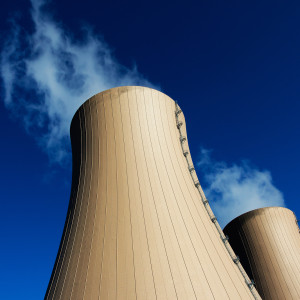Both federal and state lawmakers are grappling with the challenge of ensuring that businesses and consumers have affordable and reliable electricity, while limiting greenhouse gas emissions that will exacerbate climate change. Despite the hysteria around nuclear power, the facts show that nuclear is one of the safest and cheapest low-emission forms of energy.
Nuclear energy generation produces next to no emissions, making it a clear alternative to traditional forms of renewable energy like solar and wind. However, unlike its renewable competitors, nuclear power is generated even when the sun doesn’t shine, or the wind doesn’t blow.
The U.S. Energy Information Administration highlights that seasonal variations can have dramatic effects on the ability of wind turbines to generate energy. Similarly, the efficiency of solar panels is affected by both hot and snowy weather. Businesses and consumers benefit when their costs are transparent and predictable, and the year-round consistency of nuclear power meets that need.
According to the Energy Information Administration’s Annual Energy Outlook 2019, nuclear power in the coming years will remain price competitive with traditional rivals, such as natural gas turbines, albeit without the higher emissions of greenhouse gasses they generate.
Furthermore, the development of small modular reactors is poised to shift the nuclear industry away from expensive, large installations. These smaller reactors would be more flexible in their deployment and would lower the overall cost of energy even further.
Despite all of these advantages, nuclear power suffers from a public relations problem. From “The China Syndrome” to the recent HBO series “Chernobyl,” pop culture has long been rife with a narrative that nuclear power can only end in disaster. However, this culture of fear is wholly divorced from the reality of the nuclear power industry in America.
In stark contrast to the 1,000 workers who have died in the domestic shale industry over the last 10 years, the American nuclear industry is remarkably safe for both workers and consumers.
Even after the worst nuclear accident in American history, the Three Mile Island incident in 1979, local residents were subjected to only additional radiation equivalent to that of 1/6th of a chest X-ray. Despite countless studies, researchers have failed to identify adverse health outcomes in the surrounding areas that can be attributed to the incident.
This is a stellar safety record, given that the United States is the world’s largest nuclear energy producer. Rather than a harbinger of a radioactive disaster, researchers at NASA and Columbia University estimated that approximately 1.8 million lives have been saved since the 1970s by using nuclear power rather than traditional fossil fuels.
The fear of nuclear energy is costing consumers, investors and communities billions of dollars in lost opportunities. A 2011 study by the U.S. Chamber of Commerce highlighted how “Not-In-My-Back-Yard” opposition, spurious lawsuits and onerous regulations have hindered the development of almost two dozen nuclear projects — and countless other renewable and conventional energy developments.
The facts are clear: a well-regulated, competitive nuclear power industry can provide more affordable and reliable energy.
For nuclear power to succeed, we need to recognize its limits. With the full benefit of hindsight after the Fukushima disaster in 2011, it now seems common-sense not to place a reactor in an area that may be subject to both earthquakes and tsunamis. Similarly, the industry in America has succeeded because of its stringent safety standards, which must continually be updated to account for the latest research on nuclear safety.
Much like with climate change, we should rely on the facts and science when it comes to nuclear energy. A more honest approach to diversifying the energy mix would result in lower prices for consumers, as well as lower emissions for the world.

